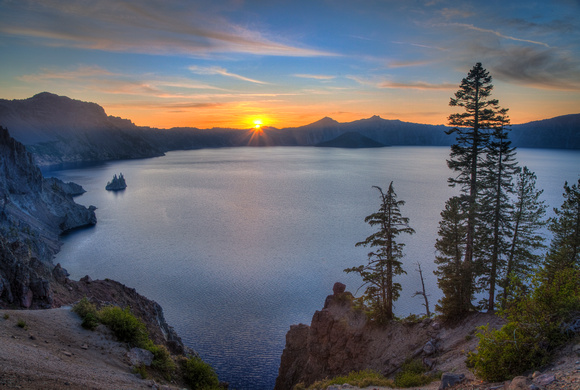Crater Lake sunset
Crater Lake National Park is a United States National Park located in southern Oregon, whose primary feature is Crater Lake. This National Park was established on May 22, 1902, and it is the sixth oldest National Park in the U.S.[2] This park encompasses the Crater Lake caldera, which rests in the remains of a destroyed volcano (eventually named Mount Mazama) and the surrounding forestland and hills. This is the only National Park in Oregon.
The lake is 1,949 feet (594 m) deep at its deepest point[3], which makes it the deepest lake in the United States, the second deepest in North America and the ninth deepest in the world.[note 1] However, when comparing its average depth of 1,148 feet (350 m) to the average depth of other deep lakes, Crater Lake becomes the deepest in the Western Hemisphere and the third deepest in the world. The impressive average depth of this volcanic lake is due to the nearly symmetrical 4,000-foot (1,200 m) deep caldera formed 7,700 years ago during the violent climactic eruptions and subsequent collapse of Mt. Mazama and the relatively moist climate that is typical of the crest of the Cascade Mountains.
The caldera rim ranges in elevation from 7,000 to 8,000 feet (2,100 to 2,400 m). The United States Geological Survey benchmarked elevation of the lake surface itself is 6,178 feet (1,883 m). This National Park covers 286 square miles (741 km2). Crater Lake has no streams flowing into or out of it. All water that enters the lake is eventually lost from evaporation or subsurface seepage. The lake's water commonly has a striking blue hue, and the lake is re-filled entirely from direct precipitation in the form of snow and rain.


